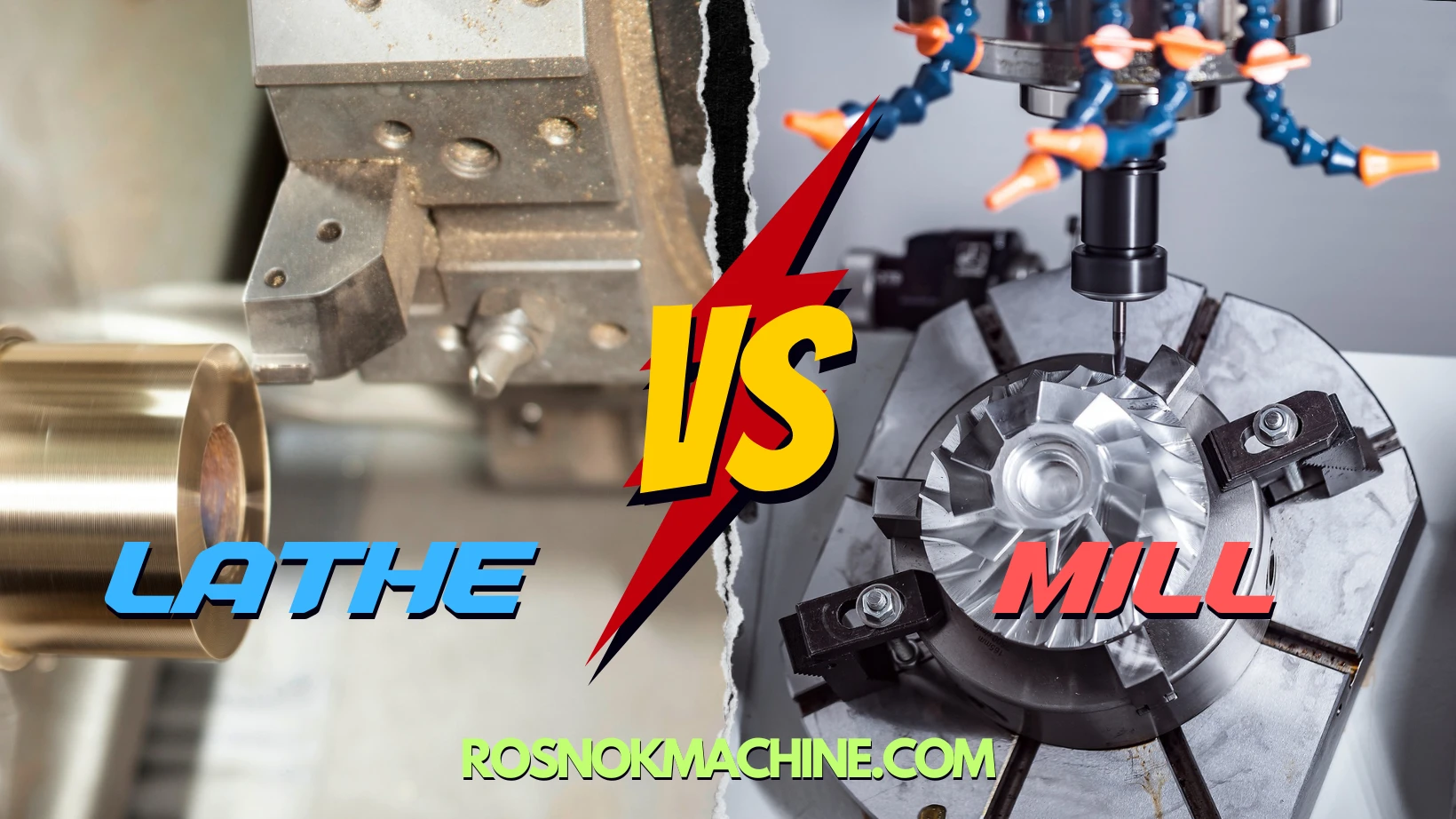Have you ever wondered what turning is and why it’s so important in manufacturing? What exactly happens during the turning process? What types of turning operations are there, and which materials can you actually use for good results? Which machines are used to perform turning operations, and how do they work?
Turning is a machining process where a cutting tool removes material from the surface of a rotating workpiece to shape it into the desired form. It can create smooth cylinders, cones, grooves, and even complex threads. During turning, the workpiece spins while the tool carefully moves to cut away layers with precision. This process is most often done on machines called lathes, but the focus remains on how the tool and material interact to achieve accurate, repeatable results.
Continue reading this article to understand what turning is, follow the complete turning process from start to finish, discover types of turning operations, and find out which machines help achieve accurate, reliable results.
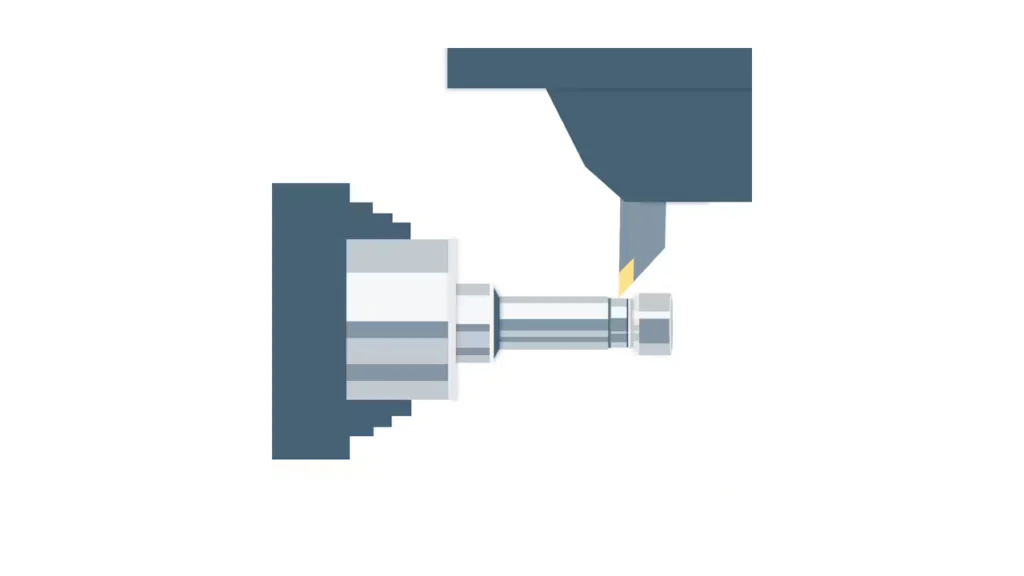
What is Turning?
Turning is one of the most fundamental and widely used processes in modern machining. It involves shaping a rotating workpiece by gradually removing material using a fixed cutting tool. Whether you’re producing simple cylindrical parts or complex threaded components, turning offers the accuracy, flexibility, and repeatability required in today’s manufacturing environments.
In this section, we’ll break down what turning really is, how it works, and why it plays such a crucial role in manufacturing workflows across industries.
A Simple Definition of Turning
Turning is a machining method where a cutting tool removes material from the surface of a rotating workpiece. Unlike milling—where the tool rotates—in turning, the workpiece itself spins while the tool stays relatively fixed and moves along one or more axes to cut. This basic principle allows for the creation of symmetrical shapes such as cylinders, cones, and threads.
The machine commonly used for turning is the lathe. Manual lathes are ideal for basic operations, while CNC lathes provide programmable, highly accurate, and automated control. Depending on the tool’s movement and configuration, turning can produce parts with high dimensional accuracy and surface quality. Typical operations include facing, straight turning, taper turning, grooving, and thread cutting.
For beginners, the simplicity of turning—just rotation and controlled tool motion—makes it an accessible entry point into machining. At the same time, mastering turning is essential for any skilled machinist.
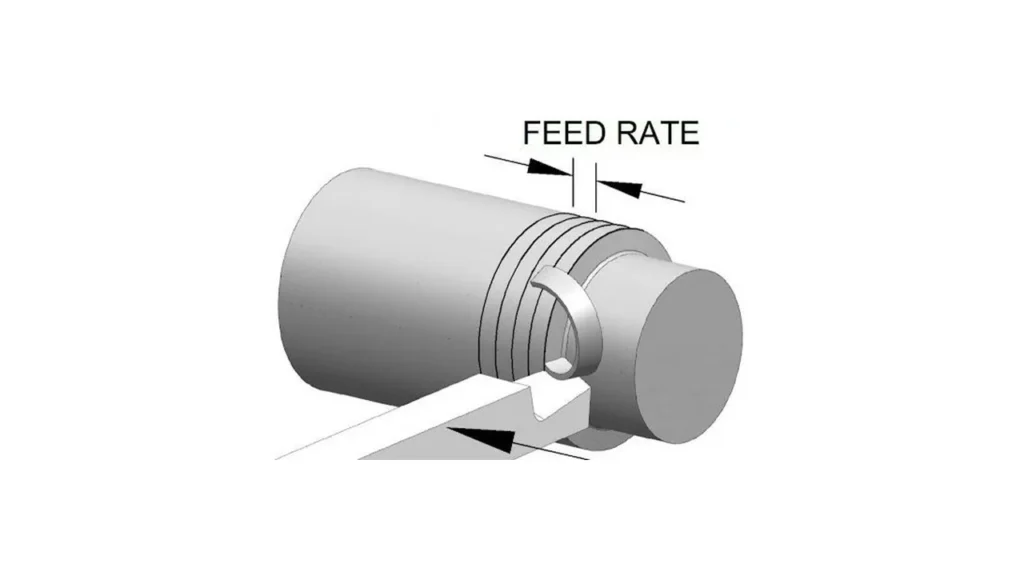
Why Turning Matters in Manufacturing
Turning is essential in manufacturing because it enables the high-precision shaping of rotationally symmetrical components. These parts are ubiquitous in industries such as automotive, aerospace, medical devices, and tooling. Examples include shafts, bushings, bearings, fasteners, and precision housings.
One of turning’s major strengths is its ability to serve both small-batch prototyping and mass production. With the right equipment and setup, turning operations can achieve tight tolerances, repeatability, and consistent surface finishes across thousands of parts.
Another key benefit is efficiency. Turning allows rapid material removal while maintaining control over part geometry. Combined with CNC systems, it enables integration into automated production lines, reducing labor costs and increasing throughput.
Ultimately, turning is not just a manufacturing process—it’s a foundational skill and technology that underpins much of the modern mechanical world.
A Step-by-Step Look at the Turning Process
Turning isn’t just about spinning a part and cutting it—it’s a carefully controlled, multi-step process that requires precision, setup knowledge, and attention to detail. While the principles are straightforward, the execution involves several key stages that must be understood to achieve consistent results.
In this section, we’ll walk through each stage of the turning process, from preparing the workpiece to final finishing. This practical breakdown is designed to help beginners see how turning operations happen in real workshop conditions.
Workpiece Setup and Fixturing
Before any turning can begin, the workpiece must be securely mounted onto the lathe. This is typically done using a chuck, which clamps the material in place. For symmetrical parts, a three-jaw self-centering chuck is common; for irregular or offset pieces, a four-jaw independent chuck may be used.
Proper alignment and centering are critical. If the workpiece is not perfectly centered, the resulting part will have runout—an uneven surface caused by off-axis rotation. In longer parts, a tailstock or steady rest is used to provide additional support and prevent deflection.
Setup errors in this stage are among the most common causes of poor-quality turning results. Accurate fixturing ensures the material remains stable even under high-speed rotation and cutting pressure.
Rotation and Tool Engagement
Once the workpiece is fixed, it begins to rotate at a defined spindle speed, measured in revolutions per minute (RPM). The correct speed depends on the material being cut, tool type, and desired surface finish. Too slow, and the cutting is inefficient; too fast, and it can damage both tool and material.
The cutting tool is then brought into position, either manually or automatically in CNC lathes. It approaches the surface of the spinning material, making the initial engagement cut—this is often a light cut to establish surface reference and verify setup accuracy.
Tool engagement must be precise. The angle, feed rate, and depth of cut determine not just material removal efficiency, but also part quality and tool wear. At this stage, the turning process officially begins.
Material Removal Process
The bulk of the operation lies in removing excess material to achieve the desired shape. This is done through a series of controlled tool passes, each cutting slightly deeper or moving further along the workpiece. These passes are referred to as roughing and finishing cuts.
- Roughing passes remove large amounts of material quickly and are less concerned with surface quality.
- Finishing passes use lighter depth of cut, slower feed rates, and optimal tool geometry to achieve the required dimension and surface finish.
Tool path is typically linear (parallel to the workpiece axis) for external diameters and radial (toward the center) for facing operations. CNC turning machines often use multiple tools in sequence, automatically switching between them to streamline the process.
Finishing and Quality Check
Once the target dimensions are reached, final finishing is performed. This might include a last skim cut, filleting sharp edges, or deburring to ensure safe handling. Surface finish is checked using profilometers or visual standards (e.g., Ra roughness).
The completed part may also undergo dimensional inspection using calipers, micrometers, or coordinate measuring machines (CMM) to confirm it meets specifications.
A well-executed turning process results in a part that is dimensionally accurate, surface-finished, and production-ready—whether it’s for a prototype or high-volume production line.
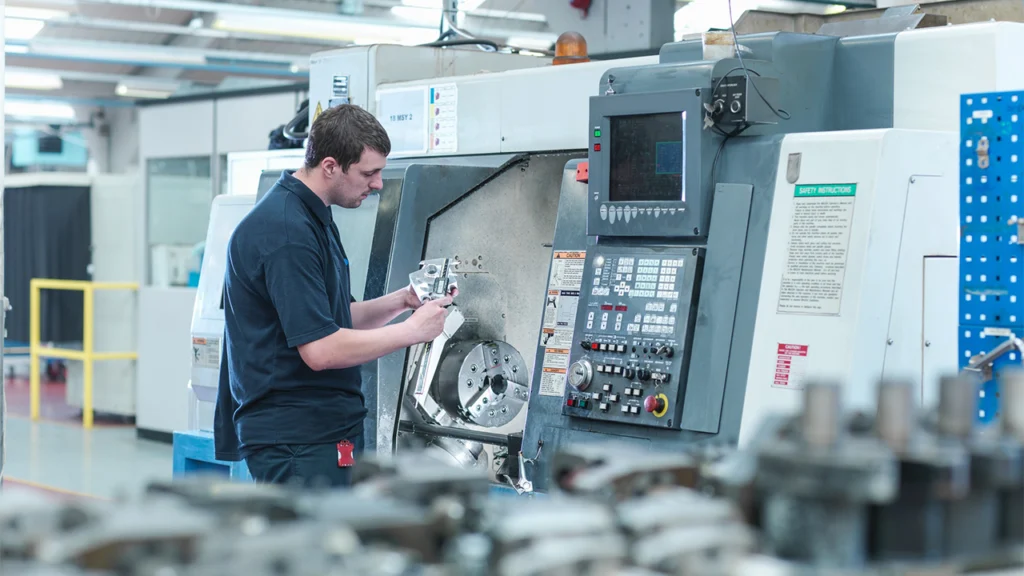
Common Types of Turning Operations
Turning is not a single fixed technique, but rather a collection of closely related operations that serve different purposes. From creating smooth surfaces to cutting threads or separating a part, each operation within the turning family has its own tools, setup, and cutting strategy. Understanding the most common types of turning is essential for applying the right method to the right machining task.
Facing
Facing is typically the first operation in many turning jobs. It involves cutting across the end of a workpiece to produce a flat, smooth surface that is perpendicular to the axis of rotation. This operation helps establish a reference face and remove any irregularities from the raw stock.
The cutting tool moves radially inward, starting from the outer edge and progressing toward the center. In manual lathes, this movement is controlled by the cross-slide; in CNC lathes, it’s programmed as part of the initial toolpath. Accurate facing ensures that all subsequent turning operations start from a known flat surface, improving dimensional consistency across the entire part.
Straight Turning
Straight turning, also called external cylindrical turning, is the process of reducing the diameter of a workpiece by removing material along its length. This is one of the most fundamental and widely used operations in turning.
The tool moves parallel to the axis of rotation, gradually removing material from the outer diameter. It’s used to achieve precise diameters, lengths, and surface finishes, often in multiple passes—starting with rough cuts and ending with finishing passes. This operation is essential for creating shafts, pins, bushings, and other cylindrical components.
Taper Turning
Taper turning is used to produce gradually changing diameters along the length of a part. Instead of a consistent diameter, the tool moves at an angle to the axis, forming a conical shape.
There are several methods to perform taper turning:
- Setting the compound rest to a specific angle (manual lathes)
- Offsetting the tailstock (for long tapers)
- Using CNC interpolation (in automated setups)
Tapered parts are commonly found in applications where precise alignment or force-fitting is required—such as in machine spindles, tool holders, and some automotive components.
Thread Cutting
Thread cutting involves forming helical grooves around or inside a cylindrical workpiece to create external or internal threads. This is a precise and critical operation, especially for parts that will be fastened or assembled later.
In manual turning, this is done by engaging the leadscrew with the carriage to synchronize tool movement with spindle rotation. In CNC lathes, thread cutting is programmed with exact pitch, depth, and start point.
Threading tools have a special profile matching the thread standard (e.g., ISO metric, UNC). Cutting threads requires tight control of speed and feed to avoid damage or mismatch. This operation is widely used in manufacturing screws, bolts, couplings, and threaded housings.
Grooving and Parting
Grooving is the process of cutting narrow channels into the workpiece surface, either for functional purposes (e.g., retaining rings) or as a preparation for parting. Parting, also called cut-off, separates the finished part from the rest of the stock material.
These operations are performed using narrow, flat tools that cut radially into the rotating workpiece. The key challenge is maintaining tool rigidity and chip evacuation, as deep grooves can trap heat and debris.
Grooving and parting are commonly performed at the end of the machining cycle and must be done with precision to avoid burrs or part deformation.
Machines Used to Perform Turning
Turning operations rely on a range of specialized machines, each designed to support different levels of complexity, automation, and production volume. While the principle of rotating a workpiece and applying a cutting tool remains constant, the machinery used in turning can vary significantly depending on application, material, and part geometry.
This section introduces the most common types of machines used to perform turning and explains how each fits into modern manufacturing workflows.
Manual Lathe (Engine Lathe)
The manual lathe, often referred to as an engine lathe, is the traditional form of turning equipment. It requires the operator to control the tool position and cutting parameters manually using handwheels and levers. These machines are typically found in workshops, repair facilities, and training centers.
Manual lathes are ideal for simple geometries, one-off parts, and hands-on prototyping. They allow for full operator control, making them excellent learning tools. Although they lack automation, they remain relevant where flexibility and human oversight are prioritized over volume or speed.
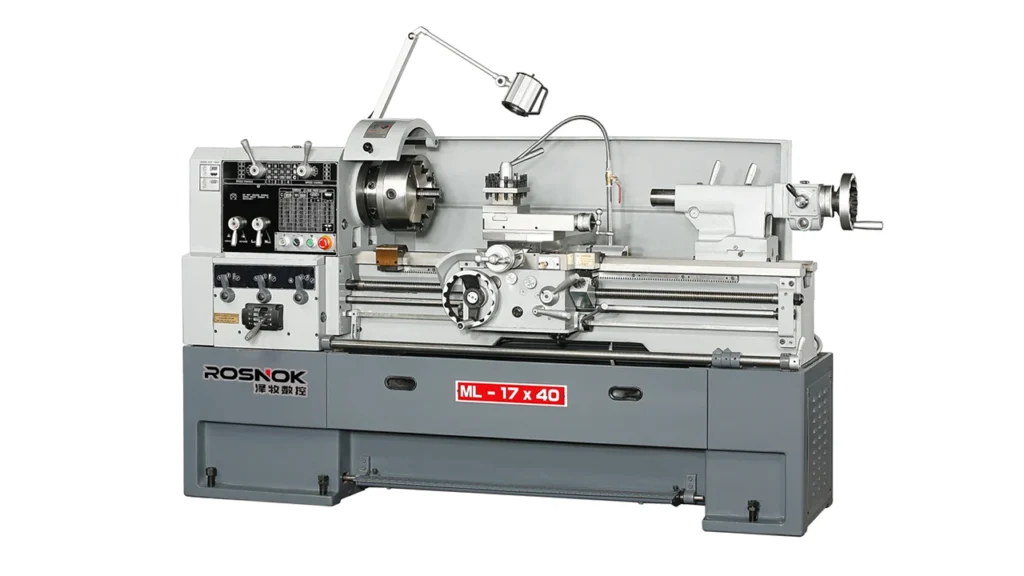
CNC Lathe
Computer Numerical Control (CNC) lathes are the industry standard for modern, high-precision turning. In these machines, the motion of the cutting tool is programmed via G-code, allowing for automated, repeatable, and complex machining cycles. CNC lathes range from 2-axis configurations to multi-axis systems capable of contouring, threading, and finishing in a single setup.
CNC turning machines are used extensively in automotive, aerospace, electronics, and medical component manufacturing. Their ability to produce thousands of identical parts with micron-level precision and minimal human input makes them essential for high-efficiency production environments.
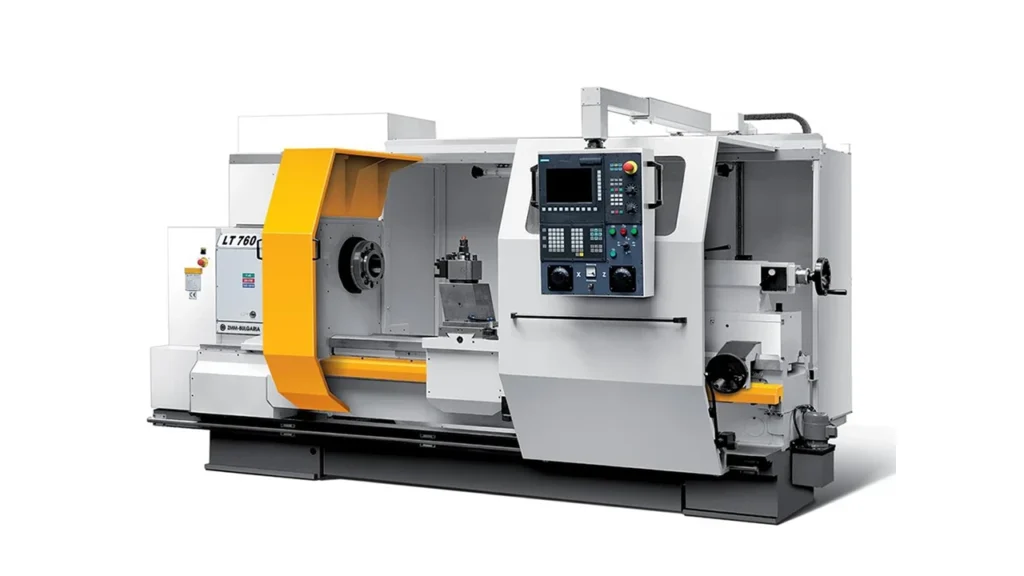
Swiss-type Lathe
The Swiss-type lathe, also known as a Swiss CNC or sliding-headstock lathe, is designed for small, high-precision parts, often with long length-to-diameter ratios. The workpiece is fed through a guide bushing, and the cutting tools operate very close to the support point, which minimizes deflection.
Swiss-type turning is commonly used in the watchmaking, medical, and electronics industries, where tolerances are extremely tight and surface finish requirements are high. These machines often support multi-tool operation and live tooling, allowing for complex operations in a compact footprint.
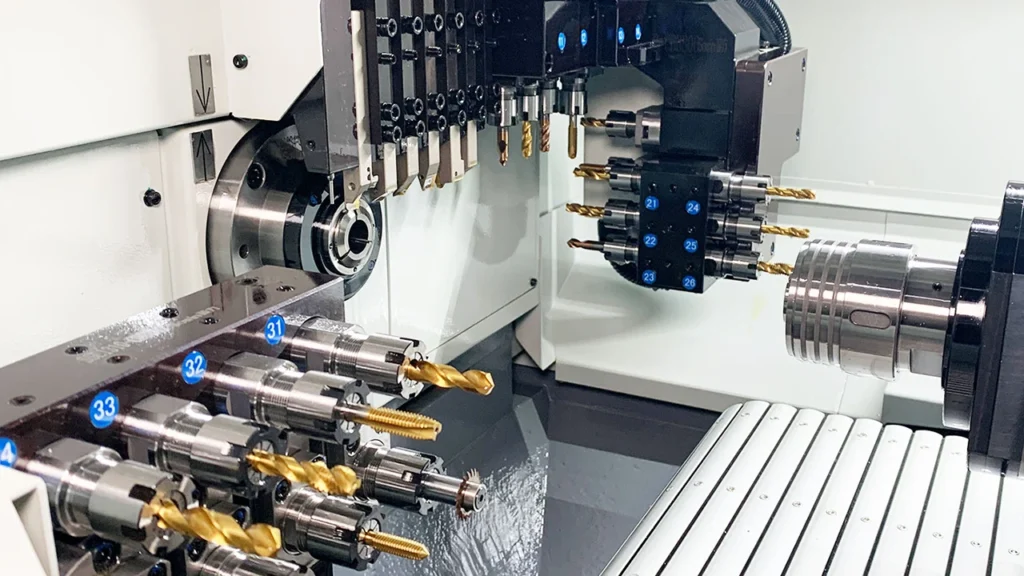
Vertical Lathe (Vertical Turning Lathe, VTL)
Vertical lathes position the spindle vertically, with the workpiece mounted on a rotating table. This configuration is well-suited for large, heavy, and disk-shaped components, such as turbine casings, flywheels, and large flanges.
Because gravity aids in supporting the workpiece, vertical turning lathes are particularly useful in aerospace, energy, and heavy machinery sectors. They typically include heavy-duty structures, large diameters, and powerful motors to manage high-inertia parts.
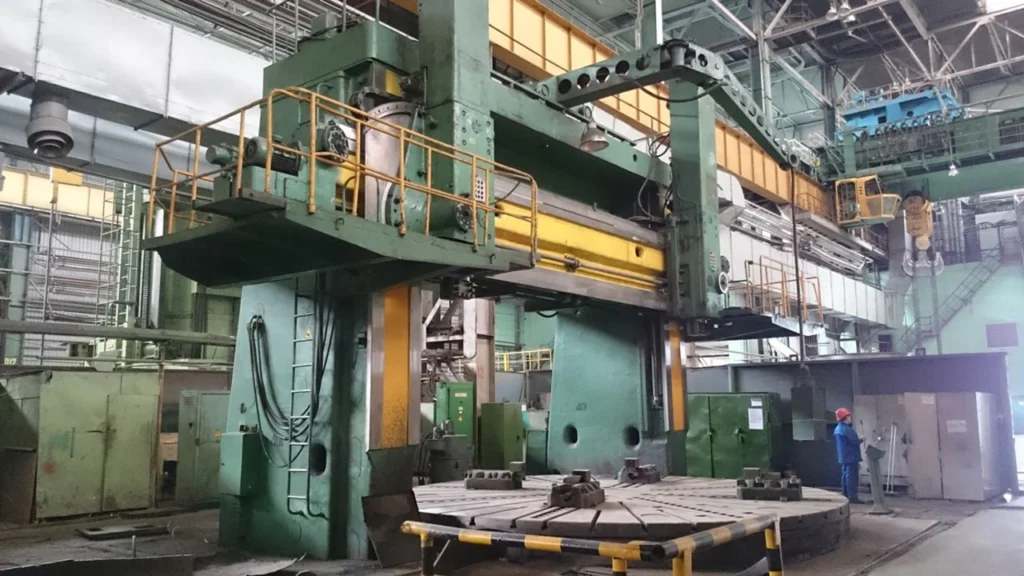
Specialized and Hybrid Machines
Beyond the standard categories, modern manufacturing also uses hybrid machines that combine turning with milling, drilling, or grinding capabilities. These are often found in turn-mill centers or machining centers equipped with live tooling and sub-spindles. Such systems reduce setup times and enable full part completion in a single cycle.
These machines are especially valuable in high-mix, low-volume production environments, where flexibility and cycle time reduction are critical.
Materials Commonly Used in Turning
Turning is compatible with a wide range of materials, making it a versatile choice across industries. Each material type has its own characteristics that affect tool selection, cutting parameters, and surface finish. Understanding which materials are most commonly used—and how they respond to turning—is key to achieving efficient, high-quality results.
Metals
Metals are the most frequently turned materials, especially in industrial applications. Common choices include:
- Mild steel – Easy to machine and cost-effective; ideal for general-purpose parts.
- Stainless steel – Resistant to corrosion but generates more heat; requires sharp tooling and coolant.
- Aluminum – Lightweight and easy to cut with excellent surface finish potential.
- Brass and bronze – Great for high-speed turning; produce small, manageable chips.
- Titanium – High strength-to-weight ratio but difficult to machine; needs rigid setups and controlled feed.
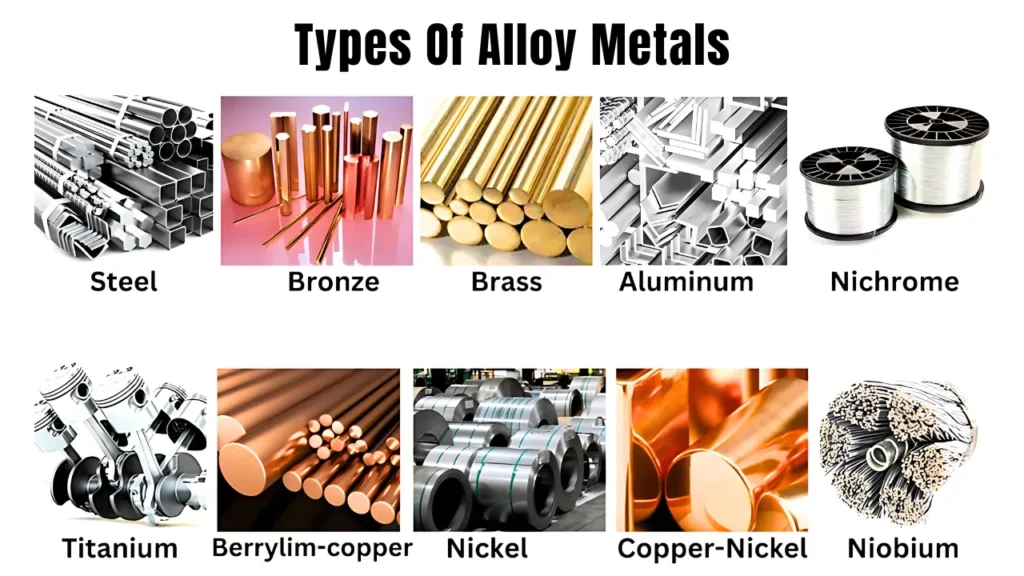
Wood
While less common in industrial CNC applications, wood turning is widely used in traditional craft, furniture making, and decorative object production. It requires specialized tools with sharper edges, lower spindle speeds, and more flexible setups compared to metal turning. Proper chip evacuation and surface protection are essential to avoid burning, tearing, or fuzzy edges—especially when dealing with softer materials.
Common woods used in turning include:
- Maple – A dense hardwood that holds fine details well and produces a smooth finish; ideal for furniture components.
- Walnut – Strong and stable with rich color; easy to turn with sharp tools and produces clean chips.
- Cherry – Turns easily and finishes beautifully, but can scorch under high speeds.
- Oak – Durable and textured; good for structural parts but may splinter if tools are dull.
- Pine – A softwood that cuts easily but tends to tear or dent if feed is aggressive; better for practice and rough forms.
Woodturning is typically performed on manual or hybrid lathes. While it doesn’t demand the same level of dimensional precision as metalworking, it places a strong focus on symmetry, surface quality, and craftsmanship.

Plastics
Engineering plastics are often used in precision applications such as medical devices or electrical insulation. Common plastics include:
- Nylon (PA) – Low friction and moderate strength; easy to machine but prone to melting if overheated.
- PTFE (Teflon) – Chemically resistant and soft; requires very sharp tools to avoid deformation.
- PEEK – High-performance thermoplastic; can be turned with carbide tools using high speeds.
Plastics typically need lower spindle speeds and careful chip control to prevent material smearing or surface defects.

Composites and Other Materials
Advanced applications may involve more challenging materials such as:
- Carbon fiber-reinforced polymers (CFRP) – Abrasive to tools; often machined dry with diamond or PCD tooling.
- Ceramics (green stage) – In soft state, some ceramics can be turned before final sintering.
- Hardened steels – Turned using ceramic or CBN inserts under high-speed, light-depth conditions.
While these materials demand specialized tooling and parameters, turning still plays a vital role in semi-finished and finish machining workflows.
Key Tools and Setup in Turning
Behind every successful turning operation is a carefully selected combination of tools, holders, and setup elements. Choosing the correct cutting tools, tool holders, and machine parameters directly affects not only the quality of the finished part but also the tool life, surface finish, and overall process efficiency.
This section covers the fundamental components involved in turning setups and how they work together to achieve stable, precise results.
Types of Cutting Tools in Turning
In turning, the cutting tool removes material from the rotating workpiece through shear action. These tools are typically made from high-speed steel (HSS), carbide, or ceramic, depending on the material being machined and the desired surface finish.
Turning tools are categorized by their purpose:
- Roughing tools are designed for rapid material removal.
- Finishing tools deliver smoother surfaces and tighter tolerances.
- Threading tools cut helical grooves for external or internal threads.
- Parting and grooving tools are optimized for radial entry into the material.
Modern turning operations often use indexable inserts mounted on toolholders. These inserts can be rotated or replaced without removing the holder from the machine, improving efficiency and consistency.
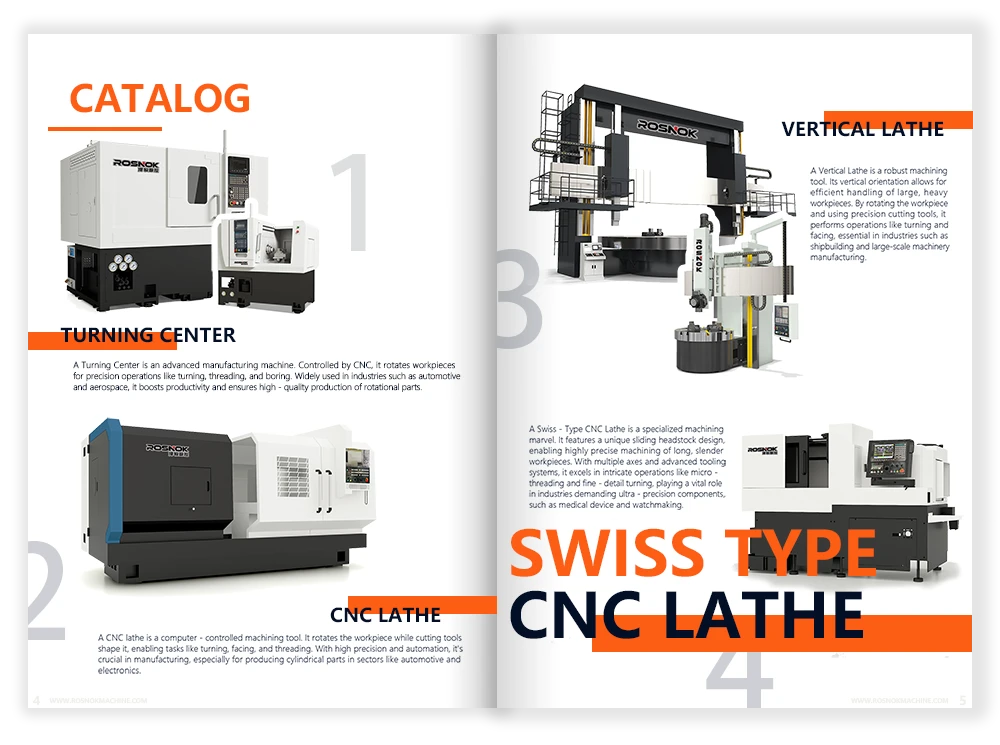
Tool Holders and Turrets
The tool holder is the component that secures the cutting tool and positions it accurately relative to the workpiece. In CNC lathes, tool holders are mounted on a turret—a rotating platform that can automatically switch between tools during a machining cycle.
Tool holders must provide:
- Rigidity to prevent vibration and deflection
- Precision in tool alignment and offset
- Compatibility with both the machine interface and insert type
Poorly selected or improperly mounted tool holders can lead to dimensional errors, chatter, or tool breakage.
Fixturing and Centering Techniques
Fixturing refers to how the workpiece is held during turning. While the most common method involves a chuck, additional supports such as tailstocks, steady rests, and collet chucks are used depending on the part length, shape, and rigidity.
Accurate fixturing ensures:
- Minimal runout (off-center rotation)
- Reduced vibration during cutting
- Consistent dimensional control
Incorrect setup at this stage can cause downstream issues even if the cutting parameters are optimized.
Feed, Speed, and Depth of Cut
Cutting parameters play a critical role in turning performance. They include:
- Spindle speed (RPM): How fast the workpiece rotates
- Feed rate: The distance the tool advances per revolution
- Depth of cut: How deep the tool penetrates the material per pass
These values are selected based on:
- Material type
- Tool geometry
- Desired finish and tolerance
- Machine capabilities
Incorrect parameter selection can lead to rapid tool wear, excessive heat, or poor surface finish.
Coolant and Chip Control
Coolant is used in turning to reduce cutting temperature, flush chips, and improve surface finish. It can be delivered via:
- Flood cooling
- High-pressure nozzles
- Mist or dry cutting (in special applications)
Effective chip evacuation is also essential, especially in deep grooves or blind holes. Long stringy chips can wrap around the tool or workpiece, creating safety hazards and dimensional defects.
Managing both heat and chip flow is essential for maintaining tool life, achieving desired tolerances, and preventing part damage.
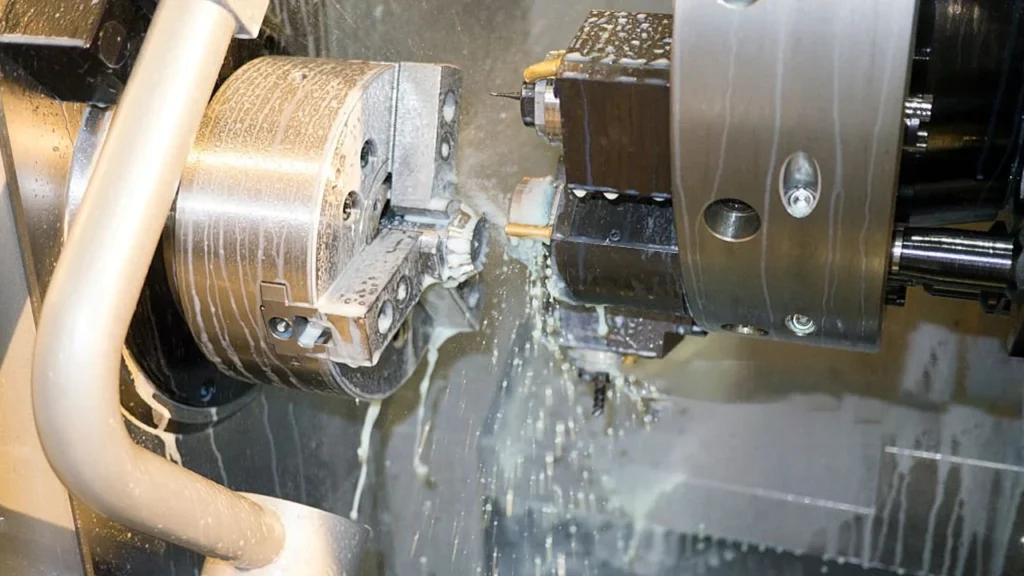
Advantages of Turning in Modern Machining
Turning has evolved far beyond its traditional role in manual machining. With advances in CNC technology, tool materials, and process control, modern turning has become one of the most efficient, precise, and adaptable techniques in metalworking. Its advantages span quality, productivity, and versatility—making it a critical pillar in today’s manufacturing strategies.
High Dimensional Accuracy and Repeatability
One of the most significant strengths of turning is its ability to deliver consistent dimensional accuracy. When using properly calibrated CNC lathes and quality tooling, tolerances within a few microns can be achieved reliably—even in mass production settings. This repeatability is critical in industries where interchangeability and quality assurance are mandatory, such as aerospace and medical device manufacturing.
Unlike some other processes, turning allows close control over tool position and cutting path, minimizing deviations from the design specification across long production runs.
Excellent Surface Finish Capabilities
Turning processes can produce extremely smooth surface finishes, especially when using high-quality inserts and optimized cutting parameters. Finishing passes in turning can achieve surface roughness values as low as Ra 0.4 µm, suitable for components that require low friction, high sealing performance, or aesthetic quality.
This makes turning ideal for parts such as shafts, pistons, or bearing housings, where surface texture directly impacts performance.
High Material Removal Efficiency
With the right setup, turning offers fast and efficient material removal. Roughing operations can eliminate large volumes of stock quickly, while finishing passes fine-tune the final dimensions. Combined with indexable tooling and automatic tool changes on CNC machines, turning minimizes downtime between operations.
In mass production environments, this translates directly to lower cycle times and improved throughput—without compromising on quality.

Broad Material Compatibility
Turning can be applied to a wide range of materials, including:
- Carbon and alloy steels
- Stainless steels
- Aluminum and copper alloys
- Titanium and heat-resistant superalloys
- Engineering plastics like PEEK and nylon (with the right tools and speed)
This versatility allows turning to be used across different industries and applications, even for parts that require varying mechanical properties or corrosion resistance.
Seamless Integration with Automation
Modern turning—especially CNC turning—integrates well with digital control systems, robotic loading/unloading, in-process measurement, and production line automation. This makes it an ideal solution for smart factories and Industry 4.0 environments.
Advanced features like tool monitoring, adaptive feed control, and spindle load feedback further enhance efficiency and reduce the chance of tool failure or dimensional errors.
Practical Tips for Turning Beginners
Getting started with turning can feel overwhelming, especially when you’re faced with unfamiliar machines, tools, and terminology. But with a clear understanding of the basics and attention to detail, beginners can avoid many of the pitfalls that lead to poor results, damaged tools, or even safety risks.
This section highlights essential tips for new machinists, from safe setup to avoiding common mistakes during turning operations.
Start with Simple Operations and Materials
For beginners, it’s best to start with straightforward operations like facing and straight turning. These allow you to understand the dynamics of tool engagement, chip formation, and surface generation without the complexity of threading or taper turning.
Choosing a forgiving material, such as mild steel or aluminum, also helps. These materials are easier to cut, reduce tool wear, and allow you to focus on technique rather than problem-solving.
Avoid starting with difficult materials like hardened steel or titanium, which require optimized parameters and tool coatings to machine effectively.
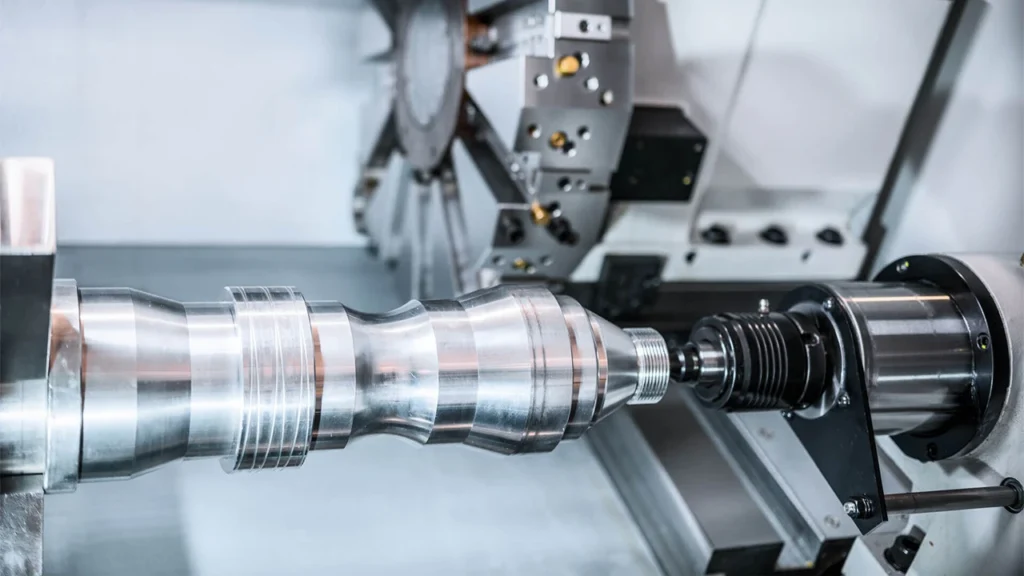
Prioritize Safety at All Times
Turning involves high-speed rotation, sharp tools, and potential flying debris—making safety non-negotiable. Always wear protective eyewear, keep loose clothing and hair secured, and never leave tools or gauges on the machine while it’s running.
Ensure that emergency stop buttons are accessible and functional. Before starting any turning cycle, double-check that the workpiece is properly clamped and that the chuck key has been removed. Many accidents in machine shops stem from simple oversights during setup.
Understanding the difference between safe RPM limits for the material and tool diameter is also crucial, as exceeding these can cause tool failure or part ejection.
Use the Right Tools and Keep Them Sharp
Dull or mismatched tools are a common cause of poor-quality cuts, excessive heat, and vibration. Beginners should focus on using correct insert geometries and maintaining sharp tool edges. A chipped insert can degrade surface finish and introduce dimensional inaccuracies.
Whenever possible, use indexable turning inserts—they offer consistent performance, are easy to replace, and minimize setup downtime. Understand the difference between roughing and finishing tools, and avoid using one tool for both purposes unless absolutely necessary.
Tool holders must also be rigid and properly aligned, or else even the sharpest tool will yield subpar results.
Learn to Listen and Observe
During turning, the machine communicates in subtle ways. Unusual noises, vibration, poor chip shape, or discoloration on the part are all signs something is wrong—whether it’s tool wear, incorrect feed rate, or spindle speed mismatch.
Paying close attention to chip color and form can tell you if you’re cutting at the right temperature and pressure. Blue or smoking chips usually indicate overheating, which can damage both the tool and the workpiece.
Being observant helps you build intuition, which is invaluable when troubleshooting or making real-time adjustments.
Keep a Log and Measure Your Work
For consistent improvement, it helps to document your turning parameters, tool types, and any problems encountered. Maintaining a machining log builds repeatability and helps avoid making the same mistakes.
Also, don’t rely solely on machine readouts. Use calipers, micrometers, or a dial indicator to physically measure the part. Measuring early and often helps catch small issues before they turn into scrap.
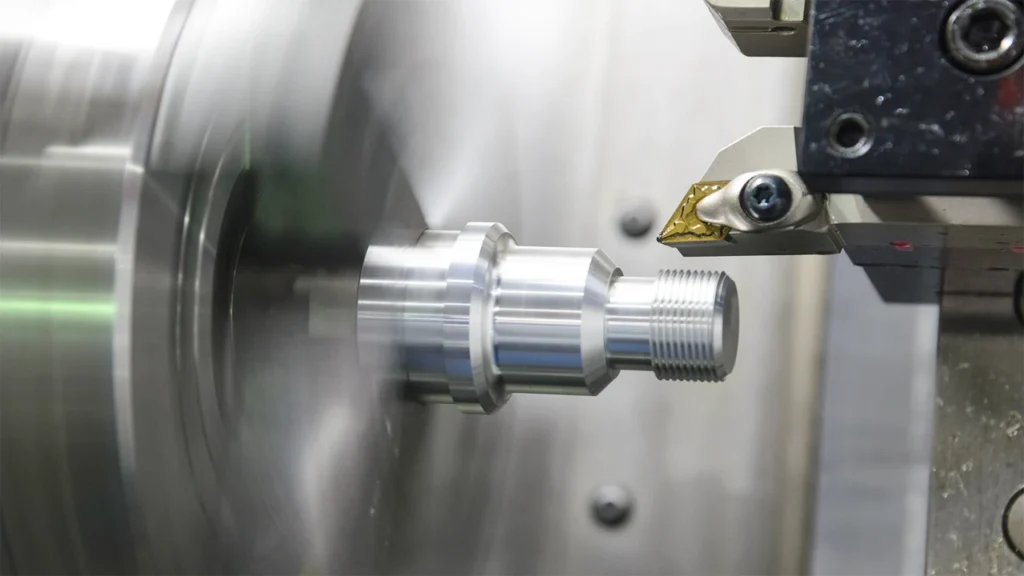
Real-World Applications of Turning
Turning is not just a theoretical machining technique—it plays an essential role in the real-world manufacturing of components used across virtually every major industry. Its ability to produce precise, symmetrical parts makes it one of the most versatile and widely applied processes in modern production environments.
From massive turbine shafts to tiny surgical pins, turning helps bring functional designs into physical reality with accuracy, repeatability, and efficiency.
Aerospace Industry
In aerospace engineering, every component must meet stringent quality standards due to extreme operating conditions. Turning is commonly used to produce rotating shafts, engine components, bearing housings, and mounting flanges that demand tight tolerances and excellent surface finish.
Because of its ability to produce high-precision rotational components, turning is widely used in aerospace for parts such as shafts, housings, and rings.
Aerospace turning often involves exotic materials like titanium alloys and Inconel, which require advanced tooling and optimized cutting parameters. CNC turning centers with in-process monitoring are standard in this sector to ensure precision and safety compliance.
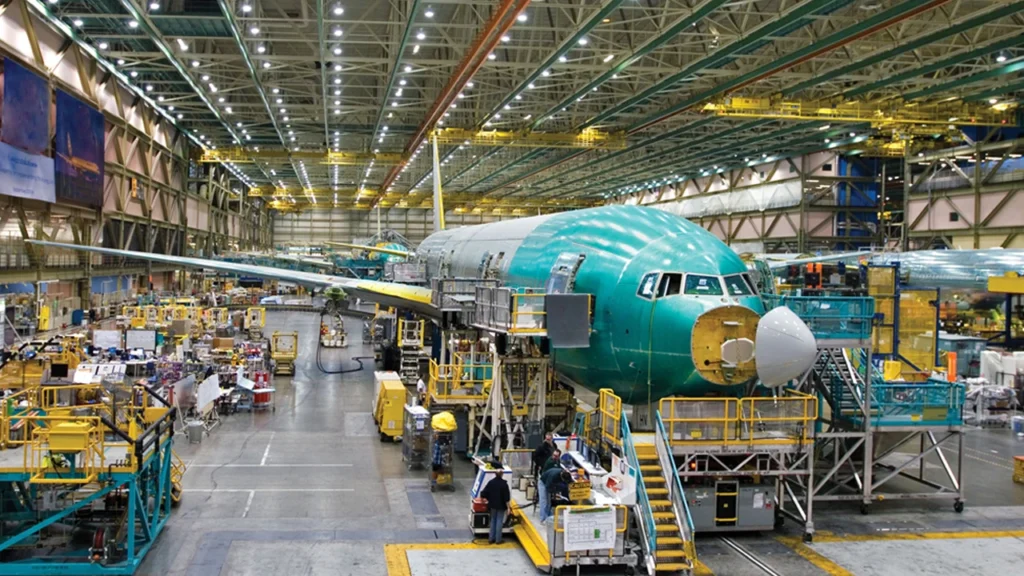
Automotive Manufacturing
In the automotive industry, turning is used to mass-produce high-precision, load-bearing components such as axles, camshafts, crankshafts, wheel hubs, and threaded fasteners. These parts must maintain dimensional consistency over long production runs, making CNC lathes with multi-axis capabilities ideal for automotive turning operations.
The process is optimized for speed and volume, with automated part loading, tool changing, and in-line quality inspection integrated into production cells. Surface finish, concentricity, and geometric accuracy are critical to ensuring proper function and durability of the final vehicle assemblies.
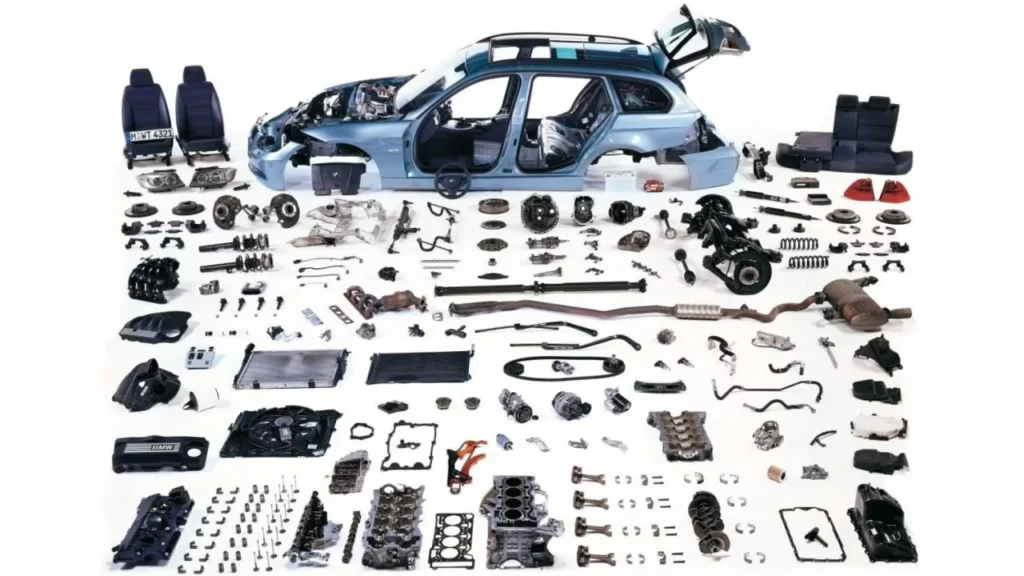
Medical Device Manufacturing
Medical applications require both precision and biocompatibility, and turning is frequently used in the production of orthopedic implants, bone screws, surgical pins, and dental components. These parts are typically made from titanium or stainless steel and require tight tolerances along with superior surface quality to reduce friction and enhance patient safety.
Swiss-type lathes are especially prevalent in this field due to their suitability for microscale, high-precision machining. With multiple axes and live tooling options, these machines can perform turning and secondary operations in a single cycle.
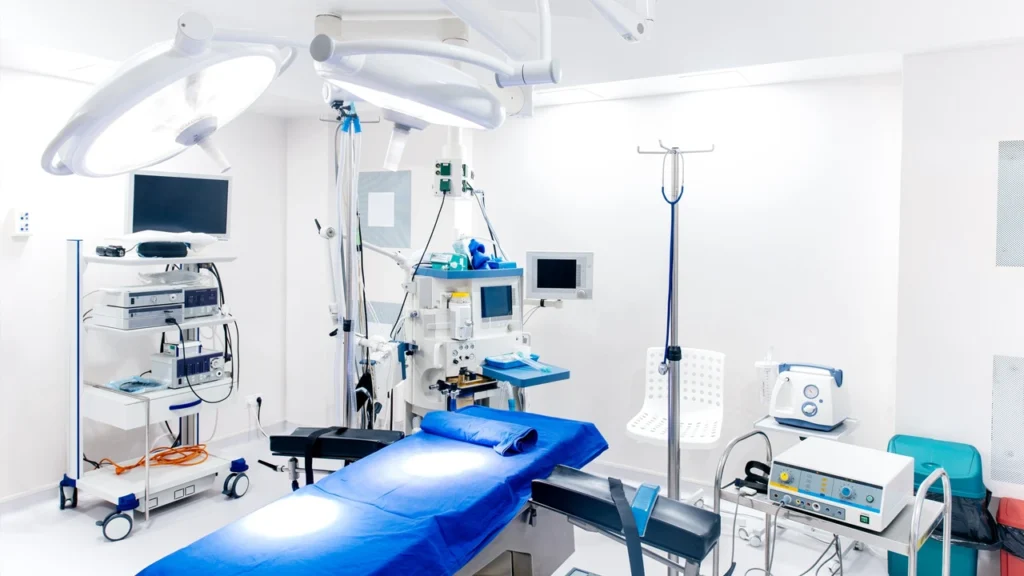
Electronics and Microcomponents
In the electronics industry, turning is applied to produce connector pins, threaded inserts, switch shafts, and micromechanical components. The required dimensions often fall in the sub-millimeter range, and the surface finish must be free from burrs or tool marks to ensure reliable conductivity and fit.
Miniature turning operations rely on high-speed CNC or Swiss-type lathes, operating at tight tolerances with specialized micro-tooling. These parts are commonly found in consumer electronics, sensors, and wearable devices.
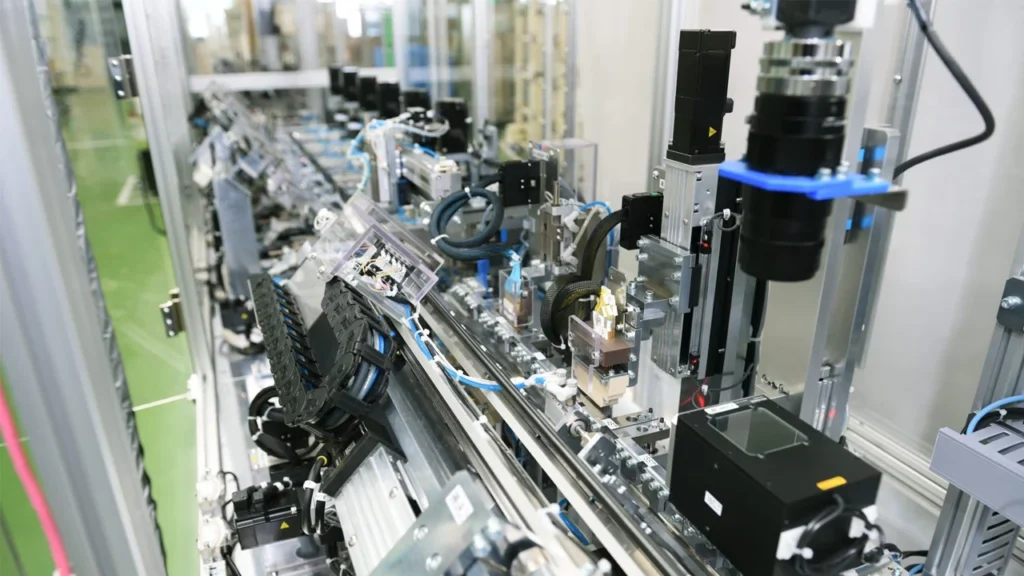
Tool and Mold Making
While mold cavities are often milled, turning is frequently used to machine cylindrical inserts, alignment pins, ejector sleeves, and round mold components. In mold bases or tooling systems, concentricity and dimensional stability are critical, and turning provides the accuracy required.
Hard turning, using ceramic or CBN inserts, is sometimes applied to semi-finished hardened steel components—allowing faster, cleaner results compared to grinding in certain operations.
Environmental and Practical Considerations in Turning
While turning is a powerful and precise machining method, it also comes with environmental and operational implications that must be considered. Manufacturers, especially those seeking to optimize cost, minimize waste, or improve sustainability, need to examine the broader context in which turning operates.
This section explores the real-world considerations related to turning—from its environmental footprint to practical decisions about cost, tooling software, and alternative technologies.
Environmental Impact of Turning
Turning generates waste in several forms: metal chips, used cutting fluids, and energy consumption. Although these are common to many subtractive machining processes, turning often requires flood coolant systems, which can pose environmental challenges if not properly filtered and recycled.
Key areas of environmental concern include:
- Cutting fluid disposal: Improper handling can result in groundwater contamination and health hazards.
- Chip recycling: Turning creates large volumes of metal chips that must be collected, sorted, and often degreased before recycling.
- Energy use: High-speed CNC lathes consume significant electricity, especially in continuous production environments.
To mitigate these issues, many manufacturers are adopting dry machining, minimum quantity lubrication (MQL), or closed-loop coolant systems to reduce environmental impact and operational costs.
Cost-effectiveness in Different Production Scenarios
Turning can be highly cost-effective—but only if matched to the right application. In high-volume production, CNC turning offers exceptional economies of scale due to automation, repeatability, and low per-part labor costs. However, for small-batch or prototype work, setup times, tooling expenses, and programming efforts can outweigh the benefits.
Other cost-related considerations include:
- Tool wear and replacement: Inserts must be regularly changed, which impacts long-term cost.
- Scrap rate: Incorrect feeds, speeds, or setups in early runs can result in material loss.
- Machine downtime: Improper planning or maintenance leads to lost productivity.
Understanding where turning fits into your specific production model is essential for maintaining profitability.
Software Commonly Used in Turning
Modern turning workflows are supported by a range of CAM (Computer-Aided Manufacturing) and simulation software tools that help plan, visualize, and optimize toolpaths before cutting begins. These systems reduce the risk of error and speed up programming.
Common software platforms include:
- Fusion 360 – popular for small shops and education
- Mastercam – widely used in professional environments
- Siemens NX – favored in aerospace and high-end production
- GibbsCAM, SolidCAM – also common in CNC shops
These tools support G-code generation, simulation of turning operations, collision detection, and post-processing specific to lathe types and controllers.
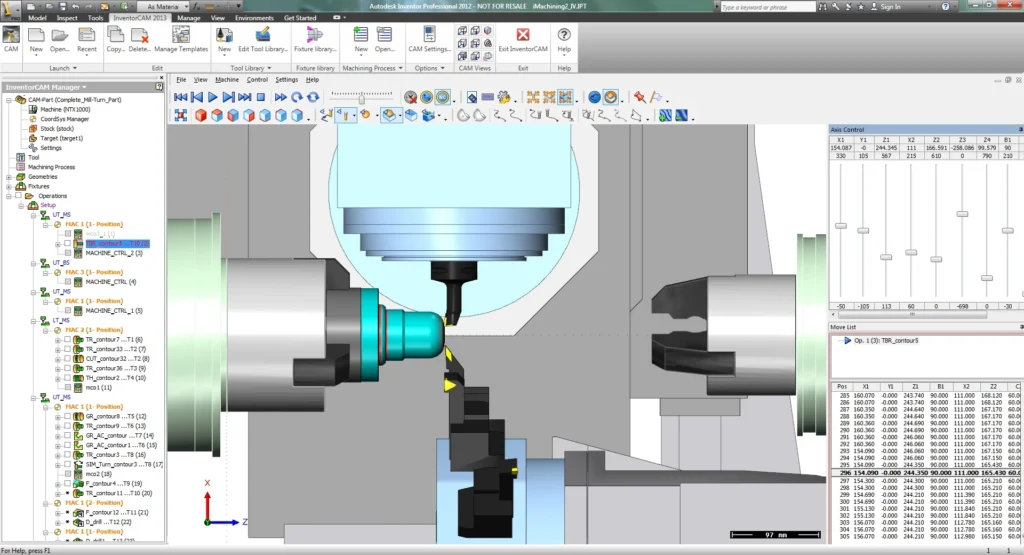
When to Consider Alternative Technologies
Turning is ideal for rotationally symmetrical parts, but it’s not always the best solution. When faced with complex contours, irregular shapes, or internal cavities, manufacturers may opt for:
- Milling: Better for flat surfaces, pockets, and prismatic geometry
- Grinding: Preferred for hardened materials and fine finishes
- Electrical Discharge Machining (EDM): For intricate shapes and heat-sensitive parts
- Additive Manufacturing: For prototyping or components with internal complexity
Understanding the strengths and limits of turning helps engineers make better process selections and reduce unnecessary tooling costs or rework.
How to Source Turning Services
If you don’t operate your own turning equipment, there are several ways to procure turning services globally. Common sources include:
- Industrial platforms: Alibaba, Made-in-China, ThomasNet
- Dedicated job shops: CNC turning specialists offering custom quotes
- OEM partnerships: Integrated suppliers offering turning as part of full-system manufacturing
When outsourcing, consider the supplier’s machine capabilities, quality certifications, inspection capacity, and after-sales support to ensure parts meet specifications consistently.
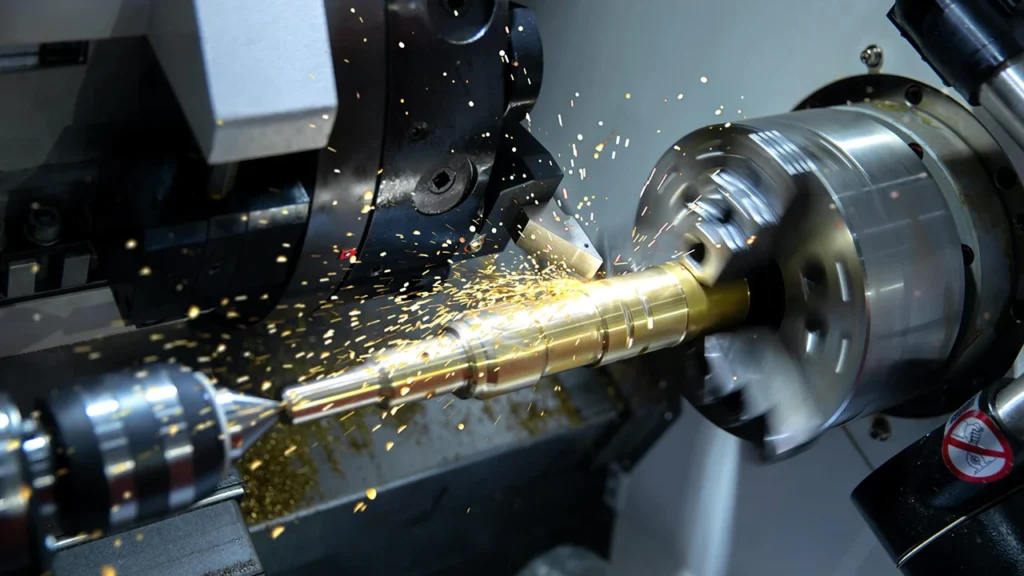
Conclusion: What is Turning?
Turning plays a central role in today’s manufacturing—from creating basic shafts and threads to producing critical components with consistent, repeatable accuracy. It’s a process trusted for its ability to deliver tight control over dimensions and surfaces across various materials and production scales.
As manufacturing demands evolve, so does the need for reliable, adaptable turning systems. Whether it’s integrating CNC automation, optimizing tool paths, or managing diverse material requirements, the success of a turning operation depends on both technical understanding and the right equipment.
For manufacturers aiming to improve precision, throughput, and long-term efficiency, choosing dependable machine tools is key. At Rosnok, we provide CNC lathes and machining centers built to meet modern turning needs—with a focus on accuracy, flexibility, and dedicated support that helps you stay competitive today and ready for tomorrow.


